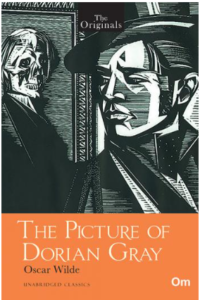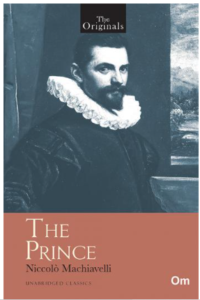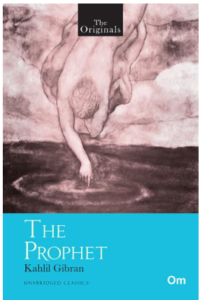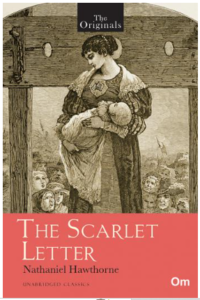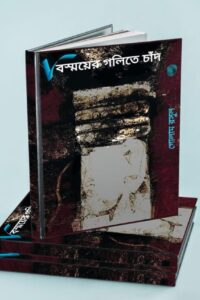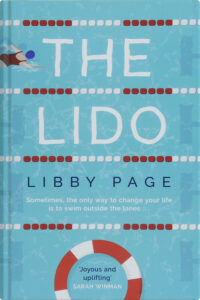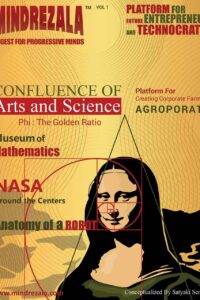16 results
- Brand: Om Books InternationalThe Originals : Mrs Dalloway (Unabridged Classics)
₹175.00₹132.00About The Book
It might be possible that the world itself is without meaning. Published in 1925, Mrs Dalloway by Virginia Woolf is an incisive portrayal of a single day in the life of 51-year-old Clarissa Dalloway, the perfect high- society hostess, in post-World War I, England. As she prepares to host a party in the evening, she is flooded with memories of her youth in the countryside in Bourton, her choice of Richard Dalloway as husband over the intriguing and demanding Peter Walsh, amidst myriads of other things. A visit from Peter that morning reinforces Mrs Dalloway’s pressing need to re-examine the trajectory that her internal and external lives have taken between the pull and push of the past and present, within a certain social structure. In October 2005, Mrs Dalloway, arguably Woolf’s finest novel, was included on Time’s list of the 100 best English-language novels written since Time debuted in 1923.
About Virginia Woolf
Born on 25 January 1882, Virginia Woolf was one of the most influential modernist 20th-century English writers, notable for using stream of consciousness as a literary technique in her works. While writing anonymous reviews for journals, she resolved to ‘re-form’ the novel by experimenting with dreams and delirium. Her novel Melymbrosia, which she completed in 1912 was born out of this determination. Recast and published in 1915 as The Voyage Out, it was about a young woman’s journey of selfdiscovery on her father’s ship in South America. Later, she modelled many of her characters on real-life associates and acquaintances.
At the onset of 1924, the Woolfs moved their residence from the suburbs back to Bloomsbury, where a relationship blossomed between the aristocratic Vita Sackville-West and Virginia. With Sackville-West, she learned to face her anxieties and overcome her nervous ailments. In fact, Orlando, a fantastical biography is partly a portrait of Vita Sackville-West.
One of the most important chapters in her early life was the summer home the family visited in St Ives, Cornwall, where she first beheld the Godrevy Lighthouse. To the Lighthouse (1927) is, therefore, considered one of her most autobiographical novels. Apart from her extremely popular extended essay, ‘A Room of One’s Own’ (1929), her other seminal works include-Mrs Dalloway (1925), Orlando (1928) and The Waves (1931).
In 1941, Virginia Woolf drowned herself in a river, aged 59. Her last work, Between the Acts, was posthumously published later that year.
Other Books By Virginia Woolf - Brand: Om Books InternationalThe Originals : The Death of Ivan Ilyich and Other Stories (Unabridged Classics)
₹225.00₹169.00About The Book
Russian writer Leo Tolstoy (1828−1910) is revered for both his novels and his brilliantly crafted short stories. This collection features some of the master’s finest short stories in translation. The Death of Ivan Ilyich is a long, lyrical, and poignant exploration of a man’s arduous journey towards the acceptance of his own mortality. It is also an incisive comment on the hypocritical modern middle-class lifestyle and its limitations. By confronting death, the hero of the story contemplates the meaning of life and man’s place in the world. The Death of Ivan Ilyich is considered one of the masterpieces of Tolstoy’s later fiction and it was written soon after his religious conversion in the 1870s. The Kreutzer Sonata is an unflinching portrayal of marital discord and breakdown and The Devil traces the complex trajectory of sexual temptation and desire. Tolstoy’s short stories dissect familial bonds, romantic love, the irrationality of human impulses as well as significant social and political churnings in 19th- century Russia.
About Leo Tolstoy
Leo Tolstoy was born in 1828 in Russia’s Tula Province,Yasnaya Polyana, into an aristocratic family. Regarded as the greatest living novelist by Fyodor Dostoyevsky and Virginia Woolf, Tolstoy’s two seminal works are War and Peace (1869) and Anna Karenina (1878).When he was a student of Oriental Languages at the University of Kazan, his teachers thought he was an incapable student who was unwilling to learn. Unsurprisingly,Tolstoy returned to Yasnaya Polyana. In 1851, reeling under gambling debts, he decided to accompany his elder brother Nikolay, an army officer, to the Caucasus and join the army. He served as a second lieutenant in the Crimean War (1853-1856). It was during this period that the writer in him was born.One of his earliest and most notable autobiographical novels was Childhood, Boyhood, and Youth (1852-1856). Novellas such as The Death of Ivan Ilyich (1886) and Hadji Murad (1912) followed. In his last days,Tolstoy was revered as a moral and religious teacher. Even Mahatma Gandhi sought the Grand Old Man’s advice on non-violence and resistance. In 1910,Tolstoy died of heart failure at the railroad station of Astapovo, Russia. He was 82. - Brand: Om Books InternationalThe Originals : Thus Spake Zarathustra Unabridged Classics
₹195.00₹147.00About The Book
The lonely one provides his hand too quickly to whomever he encounters. Thus Spake Zarathustra by German thinker and writer Friedrich Nietzsche is a path-breaking philosophical novel, crafted in four parts. It features the fictitious travels and speeches of Zarathustra – whose namesake is the founder of Zoroastrianism. Nietzsche creates his own version of Zarathustra in the book, overturning accepted conventions and questioning traditional notions of morality. The first three parts of this seminal work were first published separately, and later published in a single volume in 1887. The fourth part remained inaccessible to the public at large after Nietzsche wrote it in 1885. It was in March 1892 that the four parts were printed as a single volume. The four parts delve into concepts such as the ‘eternal recurrence of the same,’ the parable on the ‘death of God,’ morality, and the ‘prophecy’ of the Übermensch. Thus Spake Zarathustra is considered to be Nietzsche’s magnum opus.
About Friedrich Wilhelm Nietzsche
Friedrich Wilhelm Nietzsche (1844 – 1900) was a notable German philosopher who remains one of the most influential modern thinkers. He is renowned for writing on the concept of the super-man, the end of religion in a modern society as well as his exploration of the concepts of good and evil. Some of his major philosophical works are Thus Spake Zarathustra (1883), The Antichrist (1885) and Twilight of the Idols (1889). Many major thinkers of the 20th century such as Jean-Paul Sartre, Sigmund Freud and Albert Camus, among others, were influenced by Nietzsche’s ideas.
After his death, the misappropriation of his works by the Nazi Party in the 30s and 40s of the last century to further their fascist activities resulted in a negative reputation for generations whereas Nietzsche himself was steadfastly against anti-Semitism.
Nietzsche died on 25 August 1900, aged 55.
Other Books By Friedrich Wilhelm Nietzsche - Brand: Om Books InternationalThe Originals : Uncle Tom’s Cabin (Unabridged Classics)
₹295.00₹222.00About The Book
“Treat ’em like dogs, and you’ll have dogs’ works and dogs’ actions. Treat ’ em like men, and you’ ll have men’ s works.” American writer Harriet Beecher Stowe’s novel, Uncle Tom’s Cabin (or Life Among the Lowly) was serialised from 1851 to 1852 and published in book form in 1852. 300,000 copies of Uncle Tom’s Cabin were sold in the United States during the year after its publication. This abolitionist novel, which takes an indepth look at slavery, was very well received by readers in the northern part of the United States. The story revolves around Uncle Tom, a slave. While being transported to an auction in New Orleans, Tom saves Little Eva’s life. Eva’s father buys Tom to express his thanks and Eva and Tom become good friends. When Eva’s health declines, she requests her father to free his slaves. He agrees to do so, but is killed before he can fulfill his promise. Tom is sold to a merciless new owner, and his life takes a dark turn. Tom remains a stoic figure throughout and puts up a brave front as he faces many trials and tribulations.
About Harriet Beecher Stowe
Harriet BeecHer Stowe (1811-1896) was born in Connecticut, USA. She was one of 13 children of religious leader Lyman Beecher and Roxanna Foote Beecher, who died when Harriet was a child. Harriet’s sister, Catharine Beecher, an author and a teacher, was a major influence on her life. Harriet studied at a school run by Catharine, pursuing classical learning, which was usually reserved for young men. At 21, she moved to Cincinnati, Ohio. Harriet married seminary teacher Calvin Ellis Stowe in 1836 and moved to Brunswick, Maine. Along with their interest in literature, Harriet and Calvin Stowe shared a strong belief in abolition. In 1850, the US Congress passed the Fugitive Slave Law, triggering distress in abolitionist and free black communities of the North. Harriet responded to the churning with a literary portrait of slavery. In 1851, the first installment of her novel, Uncle Tom’s Cabin, was featured in the National Era. It was published as a book in 1852 and became an instant best seller. Stowe also wrote stories, essays, textbooks and several novels such as Oldtown Folks and Dred.
Other Books By Harriet Beecher Stowe
- Brand: Om Books InternationalThe Originals Meditations : The Originals
₹195.00₹147.00About The Book
You have power over your mind—not outside events. Realise this, and you will find strength. Meditations, written by the Roman Emperor Marcus Aurelius (AD 161-180), is the common name for a series of personal notes that the Emperor wrote to himself, probably without the intention to ever publish his work. Deeply influenced by Stoicism, the writings were probably a means for self-improvement. The simplicity and wisdom of the quotations make them relatable for the common reader. The series is divided into twelve books, which correspond to different phases of the Emperor’s life. Nevertheless, the central themes of self-reflection and self-discipline run throughout his writings. Aurelius believed in the need to bring the self in harmony with the universe, control rash reactions and look for logical solutions. One of the most influential philosophical books ever written, Meditations paves a way of life that is deeply influenced by teachings of Stoic philosophy.
About Marcus Aurelius
Born on 26 April 121 CE, Marcus Aurelius was the Emperor of Rome from 161-180 CE. Considered the last successor of the Five Good Emperors, who were from the Nerva-Antonine dynasty, he was associated with the Golden Age of the Roman Empire.
Best known for his widely acclaimed philosophical notes, Meditations, the Emperor was a practitioner of Stoicism. Well-versed in Greek and Latin, he chose to record his reflections in Greek. Written at a turbulent time when he was securing the trans-Danubian frontiers against German invasion, the reflections were personal and a means for selfimprovement and guidance for the Emperor-Philosopher.Celebrated for nobility of character and his philosophical achievement embodied in Meditations, Marcus Aurelius died in 180 CE, marking the end of Pax Romana, the period of peace and stability, for the Roman Empire.
- Brand: Om Books InternationalThe Originals: Romeo and Juliet (Unabridged Classics)
₹195.00₹147.00About The Book
Thus with a kiss I die. Romeo and Juliet, written by English dramatist William Shakespeare during 1594–1596 is one of the bard’s most popular and frequently performed plays. It was first published in an unauthorised quarto in 1597. An authorised longer quarto was published in 1599. A third quarto, based on the second, was used by the editors of the First Folio of 1623. Shakespeare’s main source for the play’s plot was English poet Arthur Brooke’s narrative poem The Tragicall Historye of Romeus and Juliet (1562). In the play, Romeo and Juliet, the young hero and heroine fall in love knowing fully well that their families, the Montagues and the Capulets, respectively, are bitter enemies. The star-crossed lovers are secretly married by Friar Lawrence.When Romeo killsTybalt to avenge the death of a dear friend, he is banished to Mantua. Juliet’s father, unaware that his daughter has wedded Romeo, fix up her marriage. A desperate Juliet seeks Friar Lawrence’s help, but his plan to reunite Romeo and Juliet falls apart and ends in unspeakable tragedy.
About William Shakespeare
Prolific English dramatist and national poet William Shakespeare (1564–1616) was born in Stratford-upon-Avon, Warwickshire, England. He lived in London for 25 years and wrote most of his plays there. The author of 37 plays and 154 sonnets, Shakespeare is considered the greatest writer in the English language and a dramatist without equal. Adept at both tragedy and comedy, the bard of Avon encompassed an incredible range of human emotions as well as mystery, magic, and romance in his plays. He wrote tragedies, comedies, and historical plays, and also performed on stage with the actors of the Lord Chamberlain’s Company. The wordsmith left an indelible mark on the English language and invented several words which are in use today. Shakespeare’s widely-adapted tragedies include Macbeth, Hamlet, King Lear, and Othello and his comedies include All’s Well That Ends Well, As You Like It, The Comedy of Errors, The Merchant of Venice, and A Midsummer Night’s Dream.
Other Books By William Shakespeare
- Brand: Om Books InternationalThe Originals: Sons and Lovers (Unabridged Classics)
₹250.00₹188.00About The Book
“She had borne so long this cruelty of belonging to him and not being claimed by him.” Sons and Lovers (1913) is a semi-autobiographical novel by renowned English writer D.H. Lawrence.This story of a working-class family revolves around Paul Morel, a young artist who is deeply attached to his mother, Gertrude. His relationship with his mother towers over his romances with Miriam Leivers, his repressed, religious girlfriend, and Clara Dawes, a mature and free-spirited woman.The characters of the alcoholic miner father, and the mother, who resists him in the novel, are said to be modelled on Lawrence’s parents.The older brother,William, who dies young in the novel mirrors Lawrence’s brother Ernest, who passed away. Sons and Lovers is an astute and impactful psychological study of familial bonds, passion, love, and desire. Many critics consider it an Oedipal novel whose theme has been influenced by Sigmund Freud’s controversial theory of sexual desire and the Oedipus complex.
About D.H. Lawrence
D.H. Lawrence (1885–1930) was an English writer and poet. In his writing he grappled mainly with the dehumanising effects of modernity and industrialisation. Lawrence’s works explore issues such as sexuality, emotional health, vitality, spontaneity, and instinct. His well-known books include Sons and Lovers, The Rainbow, Women in Love, and Lady Chatterley’s Lover. Lawrence’s opinions earned him many enemies and he had to suffer official persecution, censorship, and misrepresentation of his creative work throughout the second half of his life, much of which he spent in voluntary exile. At the time of his death, his public reputation was that of a pornographer who had squandered his gifts. E.M. Forster, in an obituary notice, challenged this view, describing him as ‘the greatest imaginative novelist of our generation.’The respected literary critic,F.R. Leavis, also praised his artistic integrity and moral seriousness.
Other Books By D.H. Lawrence
- Brand: Om Books InternationalThe Originals: The Birth of Tragedy (Unabridged Classics)
₹195.00₹146.00About The Book
In this sense the Dionysian man resembles Hamlet: both have once looked truly into the essence of things, they have gained knowledge, and nausea inhibits action. Celebrated German philosopher Friedrich Nietzsche’s The Birth ofTragedy from the Spirit of Music was first published in 1872.The book was reissued in 1886 as The Birth of Tragedy, Or: Hellenism and Pessimism, prefaced by an essay titled An Attempt at Self-Criticism. In this seminal work of dramatic theory, which is divided into 25 chapters, Nietzsche explores the history of the tragic form as well as the nature of Greek tragedy and its development. He holds up Athenian tragedy as an art form that transcends the meaninglessness, nihilism, and disorder of the chaotic world. By watching tragedies and celebrating them, Greek audiences experienced fear and suffering and confronted life head-on.Tragedies helped them to find the deeper meaning of human existence. Nietzsche also shines a light on the differences between the Dionysian and the Apollonian in The Birth of Tragedy, emphasising that these two elements are constantly at war for control of human lives.
About Friedrich Nietzsche
Friedrich Wilhelm Nietzsche (1844–1900) was a notable German philosopher who remains one of the most influential modern thinkers. He is renowned for writing on the concept of the “Superman”, the end of religion in a modern society as well as his exploration of the concepts of good and evil. Some of his major philosophical works are Thus Spake Zarathustra (1883), The Antichrist (1885) and Twilight of the Idols (1889). Many major thinkers of the 20th century such as Jean-Paul Sartre, Sigmund Freud and Albert Camus, among others, were deeply influenced by Nietzsche’s ideas. After his death, the misappropriation of his works by the Nazi Party in the 30s and 40s of the last century to further their fascist activities resulted in a negative reputation for generations whereas Nietzsche himself was steadfastly against anti-Semitism. Nietzsche died on 25 August 1900, aged 55.
Other Books By Friedrich Nietzsche
- Brand: Om Books InternationalThe Other Side
₹295.00₹236.00Book was Published by Om Books Internation .
- Brand: Om Books InternationalThe Picture of Dorian Gray ( Unabridged Classics) : The Originals
₹150.00₹113.00About The Book
“The books that the world calls immoral are books that show the world its own shame. The Picture of Dorian Gray, the only novel by Oscar Wilde is also his most famous work. First published in Lippincott’s Monthly Magazine in 1890, the novel was recognised as a masterpiece decades later. Initially, it garnered negative criticism due to the undercurrents of homosexuality which hurt Victorian sensibility. In his characteristic witty fashion, Wilde conveys brilliantly the relationship between art, life and morality. Dorian Gray, a disarmingly good-looking young man, marvels at his own portrait and is resentful of the idea of the portrait remaining beautiful while he is destined to age. Thus, he makes a Faustian wish to remain young and retain his physical beauty forever whereas his portrait is to be marked with age and his moral degradation. Oscar Wilde notably defended The Picture of Dorian Gray by seeking the artist’s right to make ‘art for art’s sake’, a concept famous during Aestheticism in the latter half of the 19th century. The Picture of Dorian Gray remains influential even in the 21st century.”
About Oscar Wilde
Born on 16 October 1854, Oscar Wilde was a famous Irish poet and playwright. Part of a family of intellectuals, he was educated at the most prestigious colleges in Great Britain Trinity College, University of Dublin and Magdalen College, University of Oxford. During his years in university, he was drawn to Aestheticism, the art movement prevalent in late 19th century. He wrote essays, propagated ideas as a lecturer and also wrote the famous novel The Picture of Dorian Gray, which he vehemently defended using the concept of making art for art’s sake. His aesthetic sensibilities mixed with his wit were apparent in notable plays such as The Importance of Being Earnest and Lady Windermere’s Fan, and established him as a successful playwright.
However, Wilde had a harrowing personal life because of his homosexuality. He was prosecuted and imprisoned in 1895 for two years. The idea of homosexuality in his novel The Picture of Dorian Gray was used against him to strengthen the case. Upon his release, he left for France, never to return to England.
His health declined after his release from prison and he died of meningitis in 1900, aged 46. - Brand: Om Books InternationalThe Prince : The Originals
₹150.00₹113.00About The Book
“Everyone sees what you appear to be, few experience what you really are. Niccol� Machiavelli wrote The Prince�a book on the ruthless acquisition of power and governance of the State�with the intention of appeasing Lorenzo de� Medici, the ruler of Florence, in the hope of resuscitating his political career. Often referred to as Machiavelli�s �job application� in disguise, The Prince foregrounded the contrasting aspects of virtue and vice: virtue is not always an admirable trait and vice is not always detrimental to society. He presented an �unsentimental� analysis of human behaviour and justified acts of immorality, deceit and deviousness to control a State. Written in 1513, shortly after Machiavelli was exiled from Florence, The Prince was posthumously published in 1532. Prohibited by the Court of Rome, The Prince was also banned by the Catholic Church. By early 1600s, William Shakespeare used �Machiavel� as a term to describe an unscrupulous, devious and scheming person in his works. Even today, �Machiavellian� means everything evil.”
About Niccolo Machiavelli
Born on 3 May 1469 in Florence, Niccol di Bernardo dei Machiavelli was a historian, diplomat, politician, philosopher, humanist, and writer. Regarded as the founder of modern political science, Machiavelli lived in the turbulent times of power struggles among European states and the Holy Roman Empire.
The young Machiavelli became a diplomat after the temporary fall of Florence’s ruling Medici family in 1494. From 1498 to 1512, he served as secretary to the Second Chancery of the Republic of Florence. Between 1503 and 1506, Machiavelli was responsible for the Florentine militia. In 1509, under his tutelage, Florentine citizen soldiers defeated Pisa. After his plans to organise a Florentine militia against the return of the Medici family to power in 1512 were unearthed, Machiavelli was banished from politics and thrown into prison. It was during this time that he earned the reputation for being shrewd and ruthless. In fact, the term Machiavellian is often associated with deviousness and political deceit.
After the death of Pope Julius II in 1513, the son of Lorenzo de Medici became Pope Leo X. Machiavelli hoped that by dedicating his most renowned work The Prince to Lorenzo de Medici, he would obtain an office that would help him return to public life. Alas, that was not to be.
Machiavelli’s other seminal works include On the Art of War (1521), The Mandrake (1524) and Discourses on Livy which was published posthumously in 1531. He also wrote carnival songs, comedies and poetry.
Following a period of illness, Machiavelli died on 21 June 1527, aged 58. - Brand: Om Books InternationalThe Prophet ( Unabridged Classics) : The Originals
₹99.00₹75.00About The Book
“Originally published in 1923, The Prophet is Lebanese-American writer, poet, visual artist and philosopher Kahlil Gibran’s best-known work. Comprising 26 poetic essays, on love, beauty, passion, family and death, amongst other meaningful things, accompanied with illustrations by Gibran, The Prophet acquired a cult status upon its publication in America and continues to inspire generations worldwide. This poetic and mystical masterpiece by Gibran is one of the best-selling and most widely translated books in the world. The Prophet is truly an evergreen classic.”
About Kahlil Gibran
KAHLIL GIBRAN was born on 6 January 1883. In his oeuvre of more than 700 sketches and paintings, some of the most significant portraits are of his friends, Auguste Ren Rodin, W.B. Yeats, and Carl Jung. The publication of Gibran’s 1923 masterpiece, The Prophet, a collection of 26 poetic essays, was considered a watershed in the 1960s. Ever since, The Prophet has been translated into more than 40 languages. His writings have had a profound influence on musicians like Elvis Presley, John Lennon, and David Bowie. He died in New York on 10 April 1931. He was 48.
- Brand: Om Books InternationalThe Republic ( Unabridged Classics) : The Originals
₹225.00₹169.00About The Book
The Republic by Plato is a Socratic dialogue, written around 380 BC; it is one of the most influential works of political philosophy. As is the norm in Socratic dialogue, here too, Socrates is the main speaker who engages in dialogue with other Athenians on the idea of justice. The central question that Plato addresses is “What is justice?” both at the individual and political levels. He supplements his ethical question with the secondary question “What is the relation of justice to happiness?” He furthers his argument with examples of a just city (Kallipolis) as well as through discussions of different modes of justice, virtues and vices, the importance of a philosophical king, amongst other ideas. Since mid-19th century, The Republic has remained one of Plato’s widely read dialogues and continues to influence political thought.
About Plato
Born c. 428 bc, Plato, amongst the most influential philosophers of Classical Greece, played a major role in shaping Western thought. A student of the famed philosopher Socrates, he was the teacher of the equally influential philosopher Aristotle, a student at the Academy founded by Plato. Considered the world’s first university of philosophy, the Academy is where Plato propagated his philosophical ideas.
The first to relate philosophy with polity, Plato is known for his Dialogues, considered to mark the beginning of Western philosophy. Some of his influential works are Republic (380 bc), Apology (399 bc) and Symposium (c. 380-375 bc). His major ideas include Platonic Love, Theory of Mimesis and Plato’s Cave.
Plato is believed to have died c. 424 bc, and is buried in the grounds of his Academy. - Brand: Om Books InternationalThe Return of Sherlock Holmes ( Unabridged Classics) : The Originals
₹195.00₹147.00About The Book
“Perhaps when a man has special knowledge and special powers like my own, it rather encourages him to seek a complex explanation when a simpler one is at hand. Presumed dead after plunging into the Reichenbach Falls with his archenemy Professor Moriarty, the sharp-witted detective Sherlock Holmes returns after a hiatus of three years. When Sir Arthur Conan Doyle killed off Holmes in ‘The Final Problem’, he came under intense pressure from fans to revive the beloved detective in a credulous way. Thus, in The Return of Sherlock Holmes, Holmes surprises his sidekick Doctor Watson with his return and exhibits the analytical skills and impeccable logic that continue to charm readers across time. Set in the period after Holmes’s “resurrection”, this collection has some of the most enchanting stories such as ‘The Adventure of the Norwood Builder’, ‘The Adventure of the Dancing Men’, and ‘The Adventure of the Solitary Cyclist’, which have been adapted to film, television, and radio. A keepsake edition.”
About Sir Arthur Conan Doyle
Born on 22 May 1859 in Edinburgh, SIR ARTHUR CONAN DOYLE started writing stories as a student. With a repertoire of over thirty books, hundred and fifty short stories, essays, plays and poems, he earned the distinction of being one of the greatest short story writers ever, since Edgar Allan Poe. A master of all literary genres, his memorable creation is the invincible sleuth Sherlock Holmes whom the readers are introduced to in his first novel, A Study in Scarlet (1887). Such was the charisma of this Great Detective that when the author decided to kill Holmes in His Last Bow (1893), he was compelled to bring Holmes back after vociferous demands from readers. A two-volume com- pendium, Sherlock Holmes: The Complete Novels & Stories 1 comprises some
of the significant adventures of the iconoclastic detective The Adventure of the Speckled Band, The Musgrave Ritual, A Scandal in Bohemia, and The Five Orange Pips among others. The Memoirs of Sherlock Holmes adds another dimension to this comprehensive collection.
A war correspondent, a spiritualist, an athlete and a historian, the author was knighted for his contribution in a South African field hospital during the Boer War in 1902. He died on 7 July 1930 in Crowborough, Sussex.
Other Books By Sir Arthur Conan Doyle
- Brand: Om Books InternationalThe Scarlet Letter ( Unabridged Classics) : The Originals
₹150.00₹113.00About The Book
“She had not known the weight until she felt the freedom. Nathaniel Hawthorne’s masterpiece, The Scarlet Letter, set in 17th-century Puritan Massachusetts Bay Colony, is the tale of Hester Prynne’s ‘shame’ following the birth of a child whose father remains unidentified for the larger part of the narrative. Hester’s defiance in the face of expulsion and repudiation makes her a heroine ahead of her time. Pearl, the illegitimate daughter, Arthur Dimmesdale, the ‘cheating’ Minister of Church, Reverend John Wilson, and the malicious Roger Chillingworth are Hawthorne’s characters whose lives, premised on guilt and pride, take a tumultuous turn as the cataclysmic outcome of an act of passion. The embroidered scarlet ‘A’—that she is required to wear on her dress on the day of her punishment— becomes a manifestation of Hester’s ‘adultery’, her erratic past and ignominious present. Will she break her vow of silence?”
About Nathaniel Hawthorne
American novelist and short story writer Nathaniel Hawthorne was born on 4 July 1804 in Salem, Massachusetts.
Hawthorne studied at Bowdoin College from 1821 to 1825 and shortly thereafter published his first novel Fanshawe in 1828. In 1836, he served as the editor of the American Magazine of Useful and Entertaining Knowledge.
Predominantly a short story writer in his early career, Hawthorne, after publishing Twice-Told Tales (1837), surprisingly observed about his own works, I do not think much of them. However, his most popular short stories include My Kinsman, Major Molineux (1832), The Minister’s Black Veil (1832), Young Goodman Brown (1835) and Feathertop (1852).
Hawthorne’s other major romances apart from the bestselling The Scarlet Letter (1850) were The House of the Seven Gables (1851), The Blithedale Romance (1852) and The Marble Faun (1860). For Hawthorne, romance was about exploring psychological themes like sin, human fallibility, self-destruction and retribution. Dark romanticism bordering on surrealism is what Hawthorne’s works, inspired by Puritan New England, were steeped in.
His seminal essay Chiefly About War Matters (1862) foregrounded the author’s experiences of meeting eminent figures like Abraham Lincoln, during his travel to Washington, D.C., amidst the American Civil War.
Among his published works, a biography of his college friend Franklin Pierce, the 14th President of the United States is also noteworthy.
Hawthorne died in his sleep on 19 May 1864.











